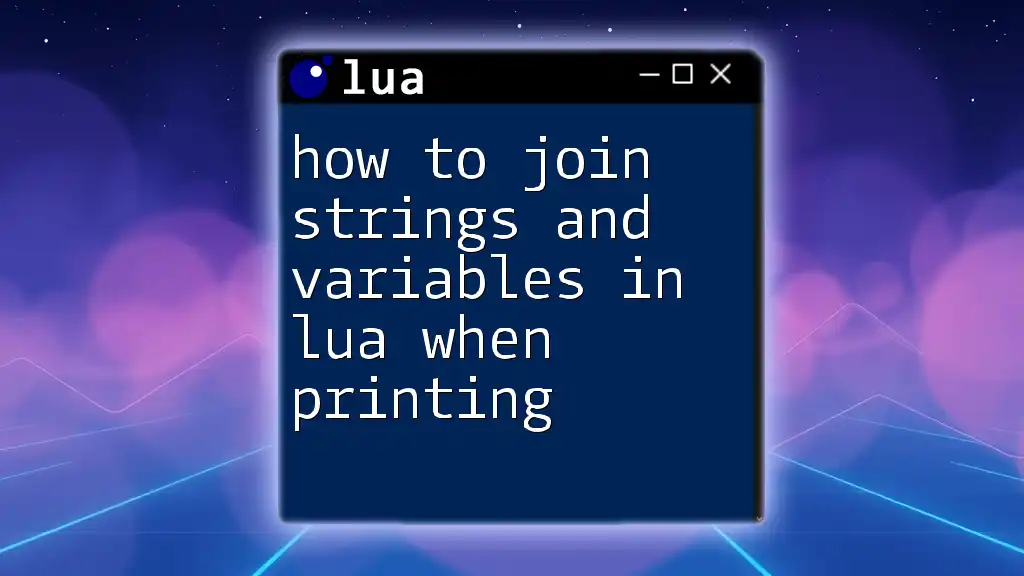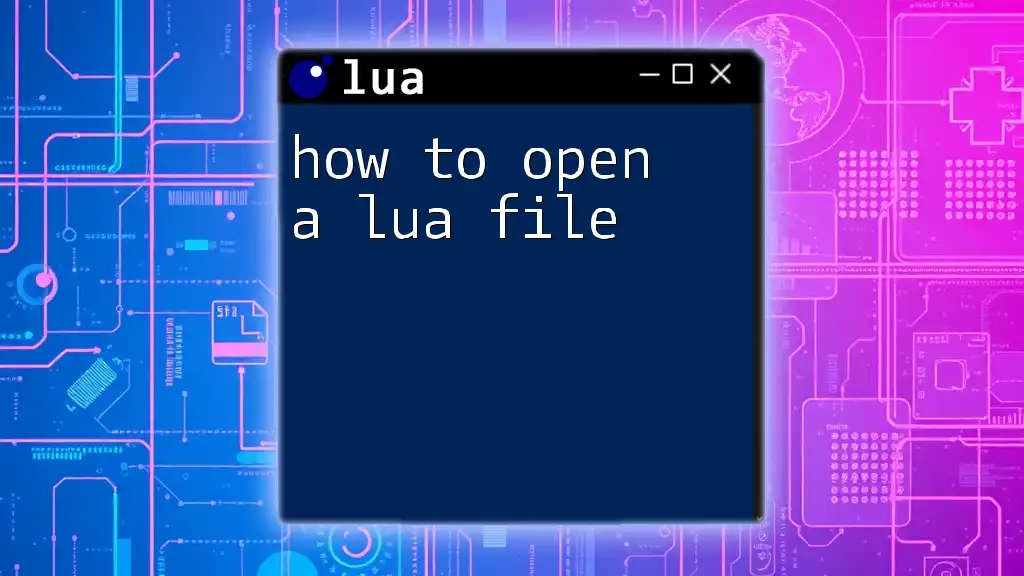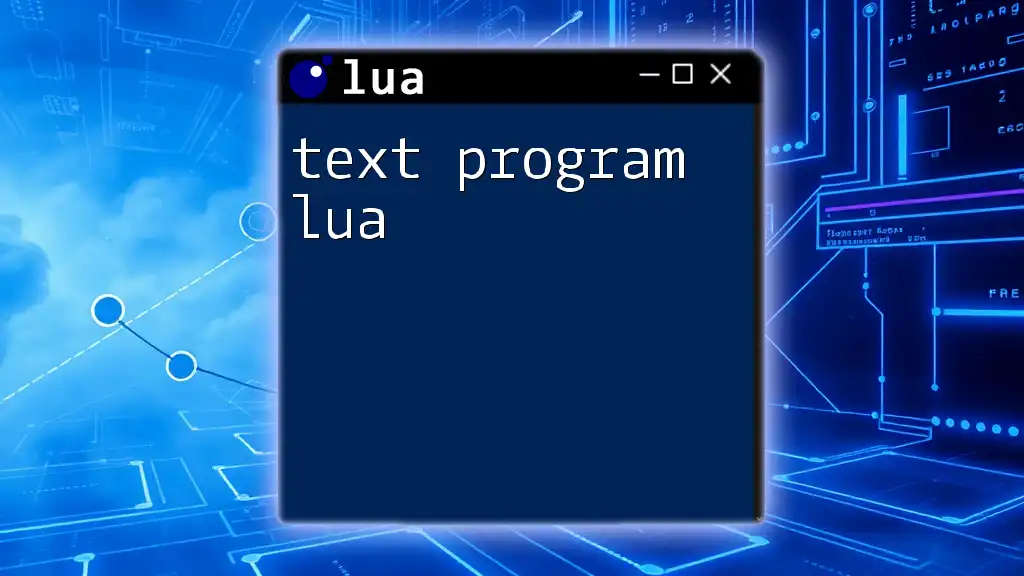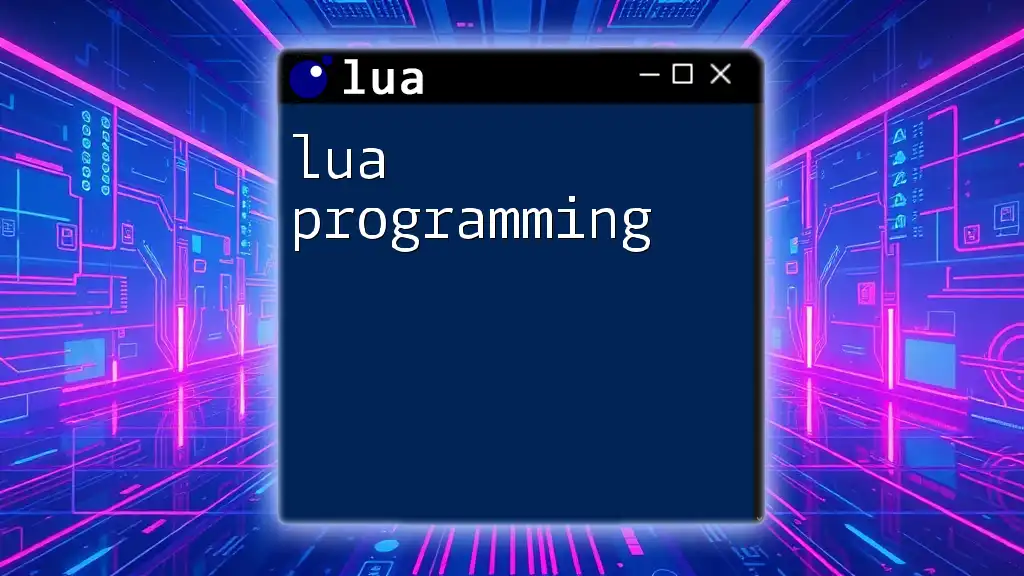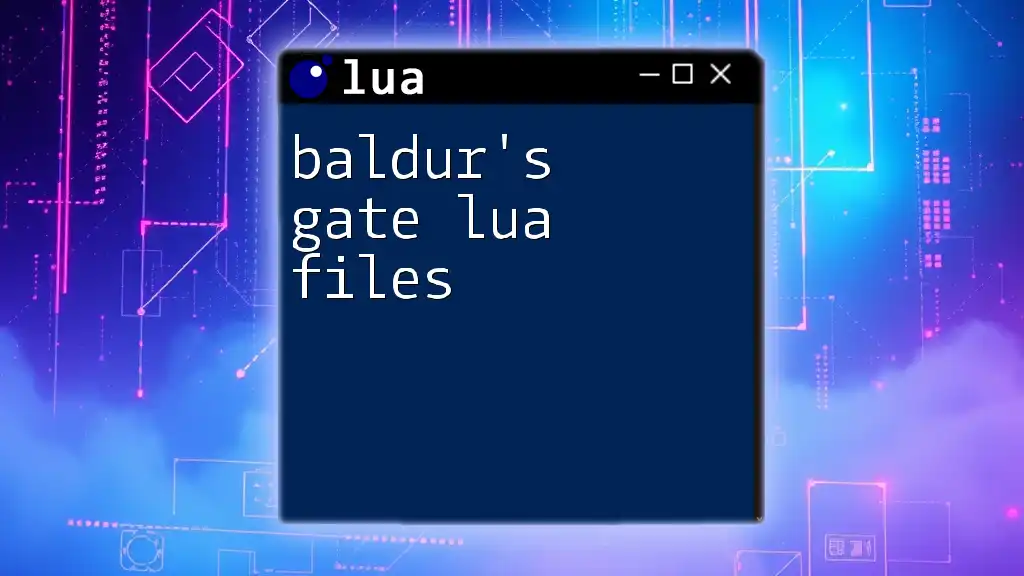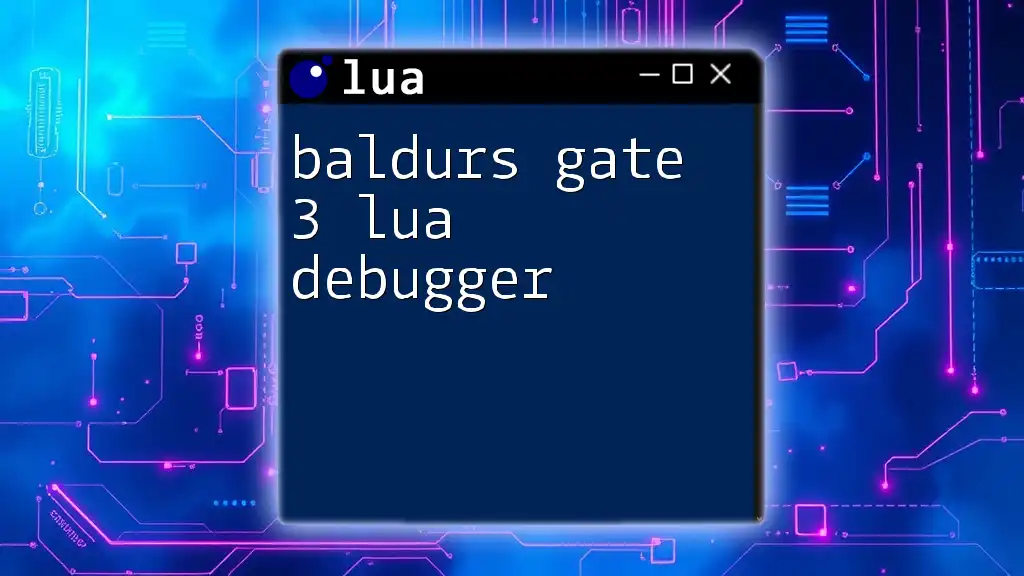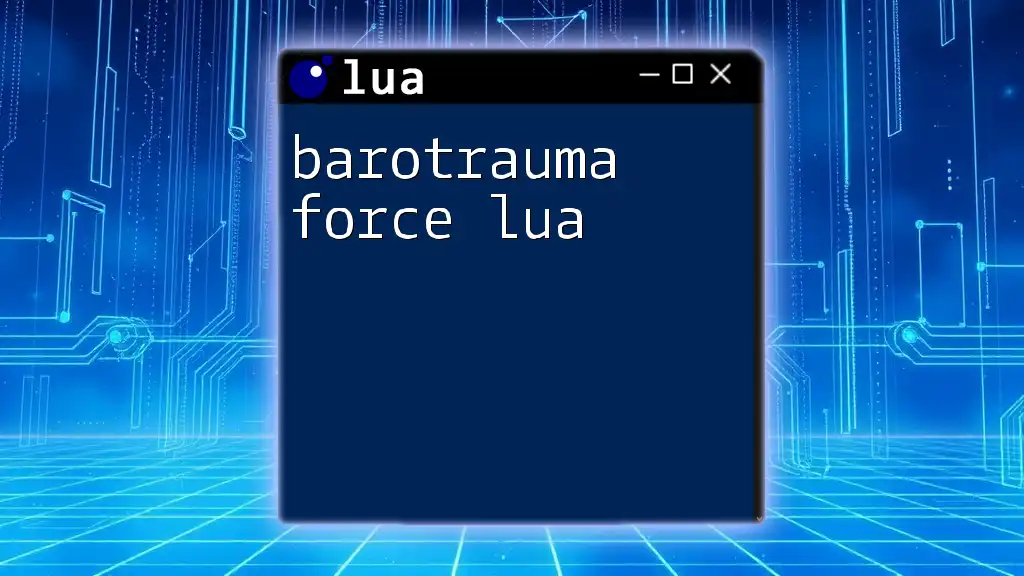In Lua, you can join strings and variables while printing by using the concatenation operator (`..`) to combine them into a single output. Here's a code snippet to illustrate this:
local name = "Alice"
local age = 30
print("Name: " .. name .. ", Age: " .. age)
Understanding Strings in Lua
What are Strings?
In programming, strings represent a sequence of characters and are essential for handling text data. In Lua, strings are treated as immutable, meaning once a string is created, its content cannot be changed. Much like many programming languages, Lua also supports UTF-8 encoded strings, which allows for a broad range of characters, including those from various languages.
Creating Strings
Creating strings in Lua is straightforward. You can use either single or double quotes, which makes it flexible depending on your requirements.
Example:
local str1 = 'Hello'
local str2 = "World"
Both of these declarations create strings that can be used for various operations, including concatenation and displaying text.
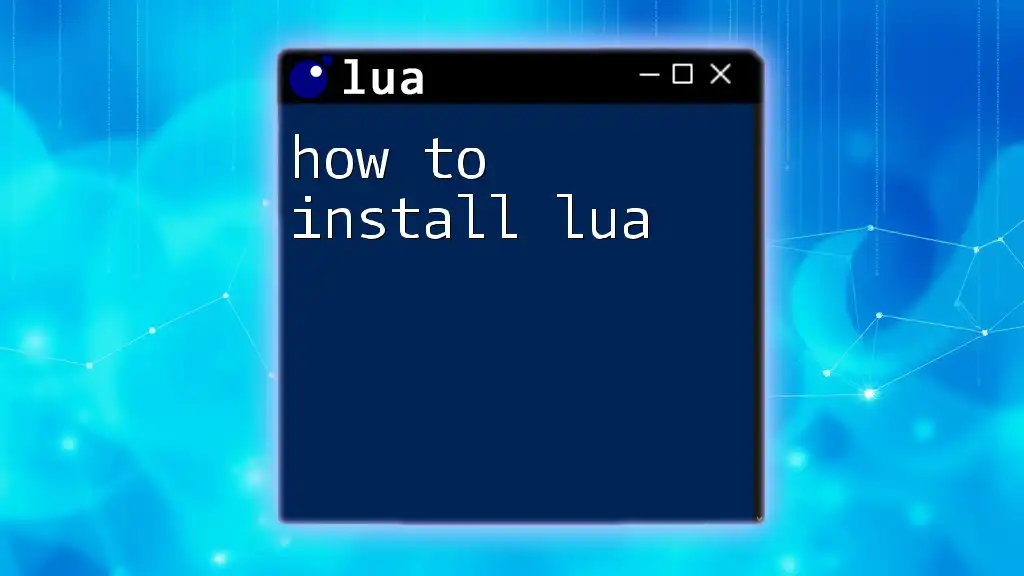
Joining Strings in Lua
The Concatenation Operator
To join or concatenate strings in Lua, you utilize the concatenation operator, which is represented by `..`. This operator allows you to combine multiple strings or string variables seamlessly.
Example:
local greeting = str1 .. ' ' .. str2
print(greeting) -- Output: Hello World
In this example, the strings `str1` and `str2` are joined with a space in between, resulting in the output "Hello World." The concatenation operator is intuitive and should be your primary tool for joining strings in Lua.
Using String Interpolation (Via External Libraries)
While Lua does not natively support string interpolation, you can achieve similar results with external libraries, like Luajit. String interpolation allows you to insert variables directly into a string format, which can improve code readability.
For instance, using `string.format`, you can perform interpolation in the following way:
Example:
local name = "Alice"
local age = 30
print(string.format("My name is %s and I am %d years old.", name, age))
This code outputs: "My name is Alice and I am 30 years old." While not built into the core of Lua, external libraries can extend functionality significantly.

Practical Use Cases
Joining Variables in Print Statements
Joining variables directly in `print()` statements is common in Lua. This method enhances the clarity of informing users about the state of variables.
Simple Examples
A typical scenario involves combining literals and variable values.
Example:
local user = "Bob"
local score = 100
print("User: " .. user .. ", Score: " .. score) -- Output: User: Bob, Score: 100
Here, the user's name and score are conveniently joined to form a readable output.
Formatting Output
Using concatenation for formatting output messages allows you to present messages neatly and clearly.
Example:
local item = "apples"
local count = 5
print("I have " .. count .. " " .. item) -- Output: I have 5 apples
This code demonstrates how to effectively communicate information about fruit with a concise message.
Advanced String Joining with Tables
Why Use Tables?
In certain scenarios, you may need to join multiple strings or variables, and using tables can be more efficient than concatenating numerous strings with the `..` operator. This method is particularly beneficial when dealing with a dynamic number of strings, as it can improve performance.
Joining Strings with `table.concat`
Lua provides a built-in function, `table.concat`, designed for joining strings stored in a table.
Example:
local fruits = {"apples", "bananas", "cherries"}
local fruitString = table.concat(fruits, ", ")
print("I like " .. fruitString) -- Output: I like apples, bananas, cherries
Here, three different fruits are joined into a single string separated by commas, resulting in a cleaner and more efficient solution compared to repetitive concatenation.

Handling Special Characters
Escaping Special Characters
When working with strings, you may encounter situations where you need to include special characters, such as quotes within your strings. In Lua, you can escape such characters with a backslash (`\`).
Example:
local quote = "She said, \"Hello!\""
print(quote) -- Output: She said, "Hello!"
This escaping method keeps your strings safe and properly formatted for display.
Formatting Numbers and Dates
In programming, especially when working with user interfaces or reports, you may need to format strings that include numbers or dates. The `string.format` function becomes handy for this purpose.
Example using `string.format`:
local price = 9.99
local formattedString = string.format("The price is $%.2f", price)
print(formattedString) -- Output: The price is $9.99
This example demonstrates how you can insert numerical values into your strings with specific formatting.
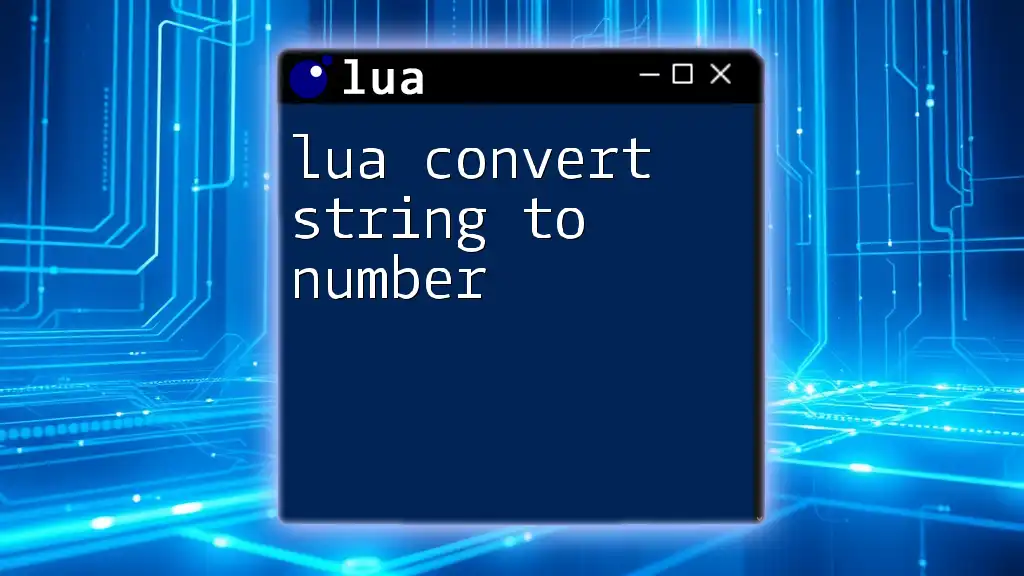
Common Mistakes to Avoid
Forgetting the Concatenation Operator
One of the most common errors among beginners is trying to use the plus sign (`+`) instead of the concatenation operator (`..`). This mistake leads to runtime errors because Lua does not recognize the `+` operator for string concatenation.
Example of a common error:
-- Wrong way
-- print("User: " + user) -- This will cause an error!
Always remember to use `..` when combining strings.
Misunderstanding Table Concatenation
It is important to note that the `table.concat` function requires a table input. Attempting to use it with non-table arguments will result in an error.
Example of an incorrect attempt:
-- print(table.concat("a", "b")) -- This will cause an error!
Make sure you're using a table for the `table.concat` function to work properly.
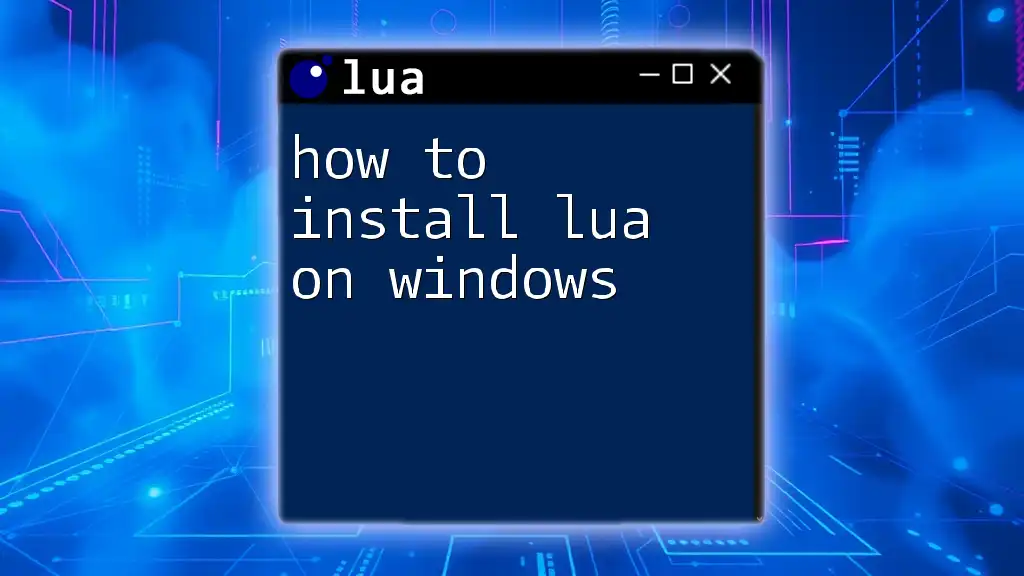
Conclusion
In this guide, we’ve explored how to join strings and variables in Lua when printing. From utilizing the concatenation operator to employing advanced methods with tables, handling strings plays a significant role in the development process. Remember to practice these concepts to gain proficiency in string manipulation within Lua.
Additional Resources
For those interested in advancing their Lua programming skills, consider exploring additional reading and resources on string manipulation techniques—this knowledge can dramatically enhance your ability to work with text data effectively.
FAQs
Here are some common questions you may have about string manipulation in Lua:
-
Can I use other operators for string concatenation? No, the only operator for joining strings in Lua is `..`.
-
How can I format dates as strings? You may need to convert date objects to strings using libraries like LuaDate for proper formatting.

